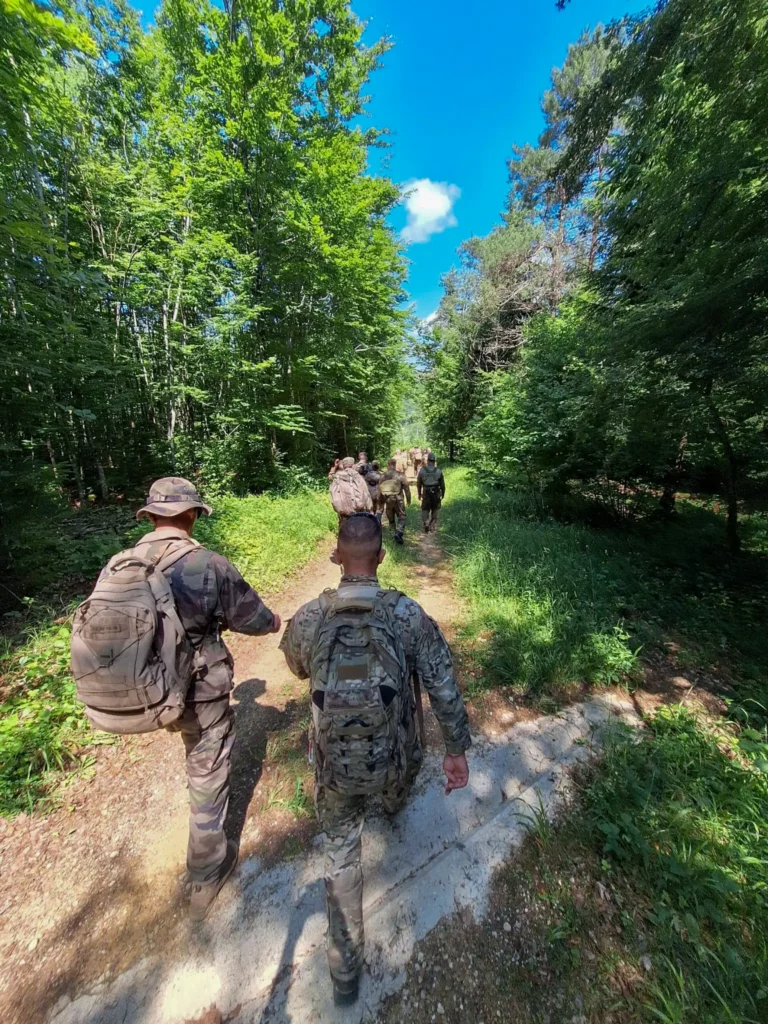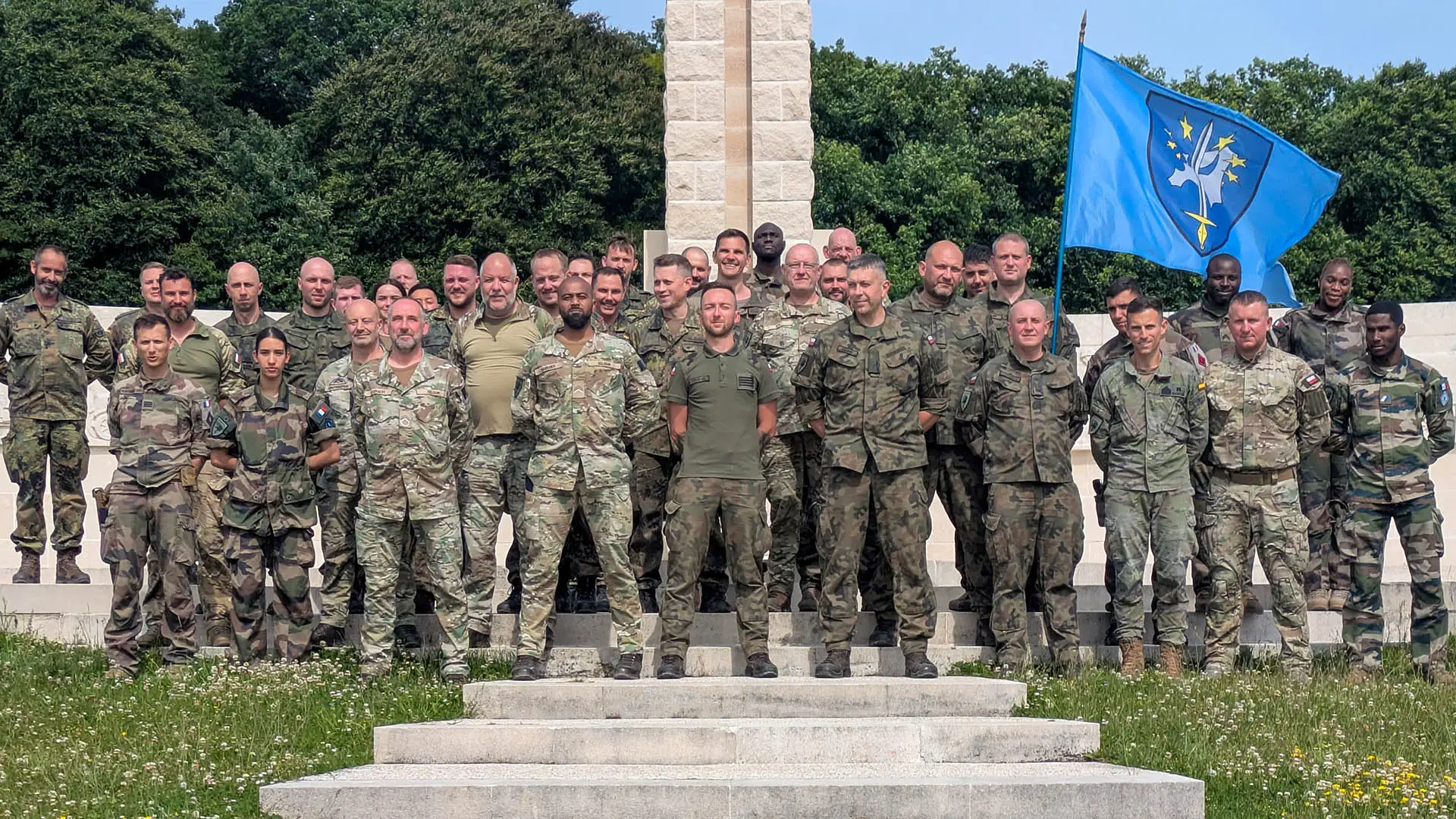From 10 to 12 June, the transport company of Eurocorps’ Headquarters Support Battalion was deployed in and around Verdun for a tactical-historical exercise. With the support of the French 1st Régiment de Chasseurs, the company deployed at Fort de la Chaume, an edifice built between 1875 and 1877, part of the protective belt surrounding the Verdun fortress.
On the first day, after a historical and tactical presentation of the Battle of Verdun, the company made its first visit to the monument of the Voie Sacrée. The French portion of the battle logistics was presented, with a particular focus on the main supply route, the road between Bar-le-Duc and Verdun: the Voie Sacrée, or sacred path. In 1916, this route saw, each week, the movement of no less than 90,000 men and 50,000 tons of ammunition, supplies, and equipment to supply the front.
On June 11, the company moved to the Verdun battlefield for a 15 km march through the main sites of the battle. The walking route led the soldiers to Fort de Froideterre, the destroyed village of Fleury-devant-Douaumont, the Lion Monument of Souville, and then to the forts of Vaux and Douaumont. The march ended at the Douaumont Ossuary. Each site provided an opportunity to detail the battle and its key events.
The soldiers enjoyed a guided tour of the Verdun Memorial, allowing them to better understand the stakes of the battle and the combat conditions endured by soldiers on both sides. This was also an opportunity to discover Avenue du Corps Européen, the main road crossing the battlefield.
To conclude this eventful day, the company gathered for a barbecue. This moment of multinational cohesion marked the conclusion of an intense year of commitments within the framework of the NATO 24 and EUBG 25 alerts, for which the transport company supported Eurocorps both in the barracks and on operations.

On June 12, after dismantling the camp, the company headed to the site of the Butte de Vauquois. This unique site of the Battle of Argonne is a symbol of mine warfare. From 1916, both camps occupied the underground and dug a significant network of subterranean galleries to infiltrate enemy positions or to inflict maximum casualties using tons of explosives. The company’s military personnel thus discovered a singular landscape separating the German lines from the French lines. A hill cut in two by craters of 10 to 20 meters caused by the explosions of 12 to 60 tons of explosives.
At the end of this visit, the company redeployed to the Lizé barracks. This experience offered an opportunity to learn about and reflect on a crucial battle of World War I, while honoring the memory of the soldiers who fought on these lands. It also strengthened the cohesion and bonds between the military personnel of the five nations composing the transport company.

